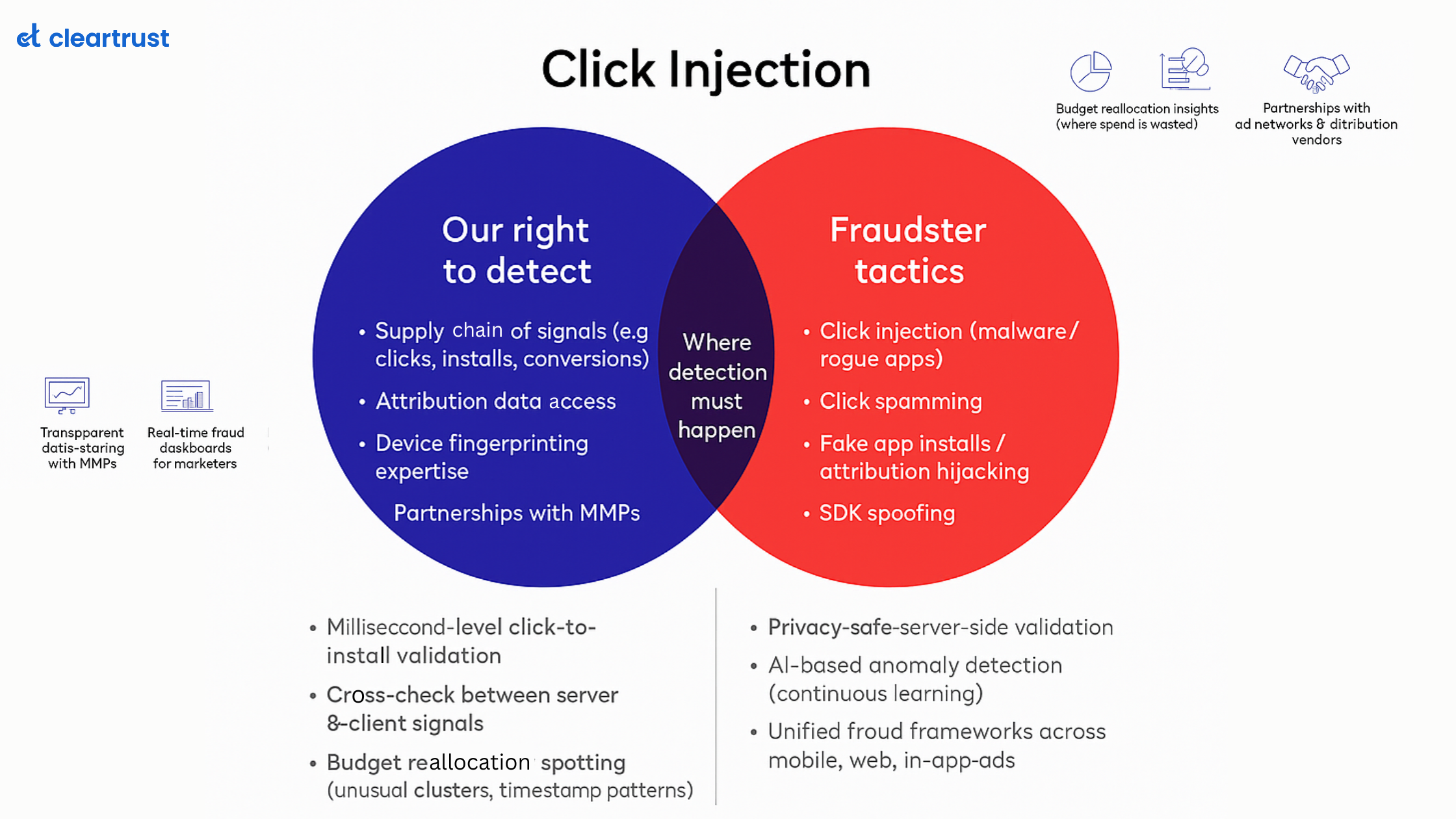How confident you are when you say that the creative approved by you and the publishers is visible to the user?
Sounds absurd but this article is going to explore a fraud type which is not only capable of being skipped from the detection process but can also tarnish a brand’s reputation.
What’s worse? Traditional ad fraud mitigation solutions may not be able to identify this fraud; given that the detailed analysis of fraudsters behind such activities is hardly available due to their black box nature.
An estimated $84 billion was wasted on ad fraud in 2023. This number also includes the cost incurred due to the loss of customers from sophisticated techniques like ad cloaking amounting to a negative perception of brands in the eyes of genuine users.
This blog delves deep into the shadows of ad cloaking, shedding light on its mechanisms, impacts, and the path to mitigation.
What is ad cloaking? How does it take place?
Ad cloaking is a fraudulent technique used by bad actors to display different content to users than what is shown to advertisers or search engine crawlers. This deceptive practice is particularly pernicious because it allows fraudsters to bypass standard detection mechanisms, making it a formidable opponent against generic fraud filters. The process typically unfolds as follows
- Detection of visitor type: The fraudster's server uses scripts to determine whether the visitor is a regular user or an entity likely to audit the content (such as search engine bots or verification tools used by advertisers).
- Delivery of content based on visitor: If the visitor is identified as an auditor, the server presents legitimate advertising content. Conversely, regular users are shown unrelated or harmful content, often leading to phishing sites, scams, or other types of undesirable web pages.
- Dynamic content switching: The content displayed to the user can change dynamically based on various factors, including IP address, geographic location, device type, or even the time of visit, making ad cloaking particularly hard to detect and counter.
What is the impact of ad cloaking?
Advertisers
- Financial losses: Advertisers incur significant financial losses as they pay for clicks or impressions that do not reach their target audience. This misallocation of advertising spend detracts from legitimate campaigns and can skew budgeting decisions based on flawed performance data.
- Damaged brand reputation: When users are misled into harmful or irrelevant content through cloaked ads, it directly tarnishes the reputation of the advertised brand. This association with negative user experiences can lead to diminished trust and loyalty among potential customers.
- Skewed analytics and performance metrics: Ad cloaking manipulates the apparent success of advertising campaigns, providing advertisers with inaccurate data on user engagement, conversion rates, and overall campaign effectiveness. This distortion makes it challenging to optimise campaigns and allocate resources efficiently.
- Increased scrutiny and penalties from platforms: Advertisers may face increased scrutiny from advertising platforms and networks if their ads are found to be part of cloaking schemes. This can result in penalties, including the suspension of ad accounts or increased costs per click/impression.
Publishers
- Loss of ad revenue: Publishers risk losing advertising revenue if cloaked ads are detected on their platforms. Advertising networks may penalize publishers by reducing their ad fill rates or excluding them from high-value campaigns.
- Erosion of user trust: When users encounter cloaked ads leading to malicious or irrelevant content on a publisher's site, it erodes trust in the platform. This loss of confidence can lead to a decrease in regular visitors, impacting the publisher's traffic and engagement metrics.
- Penalties and reputation damage: Just as with advertisers, publishers associated with cloaking activities—whether knowingly or unknowingly—face reputational damage in the eyes of both users and partners. This can make attracting quality advertising partners and maintaining a positive standing in the digital ecosystem more difficult.
- Resource drain from addressing complaints and issues: Dealing with the aftermath of ad cloaking, such as addressing user complaints, removing offending content, and communicating with advertising partners, requires significant time and resources. This diversion can detract from other productive activities and initiatives.
How to avoid cloaking?
Combatting ad cloaking requires a multi-faceted approach, emphasizing the need for transparency, customisation, and proactive detection methods
- Implement a white-box solution: Dealing with sophisticated ad frauds requires a solution that is capable of being transparent enough to furnish all the relevant details with better analysis. To ensure this, always opt for a white-box ad fraud mitigation solution that provides complete visibility into the traffic analysis process, revealing the sources and reasons behind flagged activities.
- Utilize customised IVT filters: Instead of relying on one-size-fits-all solutions, employ customised Invalid Traffic (IVT) filters tailored to the specific types of ad fraud prevalent in your niche or industry. Ad cloaking can involve displaying only a specific form of malicious ads like those with adult content. For this purpose, you require solutions capable of filtering such forms of traffic
- Engage in continuous monitoring and analysis: Regularly analyze traffic data for anomalies and patterns indicative of cloaking activities, allowing for swift identification and response.
- Collaborate with trusted partners: The key to combating ad fraud arising from cloaking or similar activities is strengthening your partnerships. Work with ad networks, platforms, and technology providers known for their robust anti-fraud measures and willingness to share data for collective security.
Ad cloaking represents a nuanced challenge in the digital advertising ecosystem, one that cannot be effectively combated with generic, opaque solutions. The key to safeguarding against this and other forms of e-advertising fraud lies in adopting an approach that values transparency, customisation, and specificity. As the digital landscape continues to evolve, so too must our strategies for protecting the integrity of online advertising. By prioritising insight, adaptability, and collaboration, advertisers and publishers can stand resilient in the face of fraud







